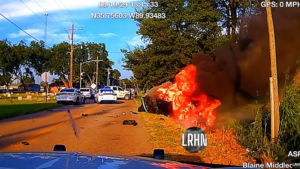This Is Why You Don’t Drive Golf Carts at 30 MPH

Not driving at an excessive speed is common sense. But, as the saying goes, “common sense isn’t so common.” That is why researchers conduct crash tests under likely scenarios for when an accident might take place. But these tests aren’t exclusive to regular vehicles we’re used to seeing on the road. Even golf carts get to have their turn in the barrel.
A test conducted by the European New Car Assessment Programme (Euro NCAP), which is the European version of the NHTSA, shared its footage and results of a golf cart’s crash test. Specifically, a Club Car Villager, which is labeled as an electric “4 seat heavy quadricycle.”
In the first test, researchers had the cart be involved in a frontal impact while traveling at 31 mph (50 kph), followed by a simulation of being T-boned by another vehicle. As seen in both tests, the crash test dummy is clearly seen receiving significant physical trauma. Especially due to the lack of airbags.
According to the results, the frontal impact resulted in serious injuries to the dummy. “The dummy’s head hit the steering wheel and the values recorded indicated a very high risk of fatal injury. The chest pressed against the steering wheel, taking most of the force of the dummy. As a result, there was relatively little force on the seatbelts and they, and their connection to the rear pillar, stayed intact during the impact. The seat base hinged forwards in the impact and this, combined with the intruding instrument panel, led to the tops of the dummy’s tibias striking the facia, leading to very high displacements in the knees. Protection of the knees and femurs was rated as poor.”
In the side-impact test, the dummy still received physical injuries, though not as severe as the previous test. “In the side impact, there was nothing to protect the dummy from the striking barrier. The driver’s seat became detached from the structure and moved sideways, together with the lower part of the test dummy.”
As fun as golf carts are to drive, these tests serve as a reminder to ease up on the throttle next time.









